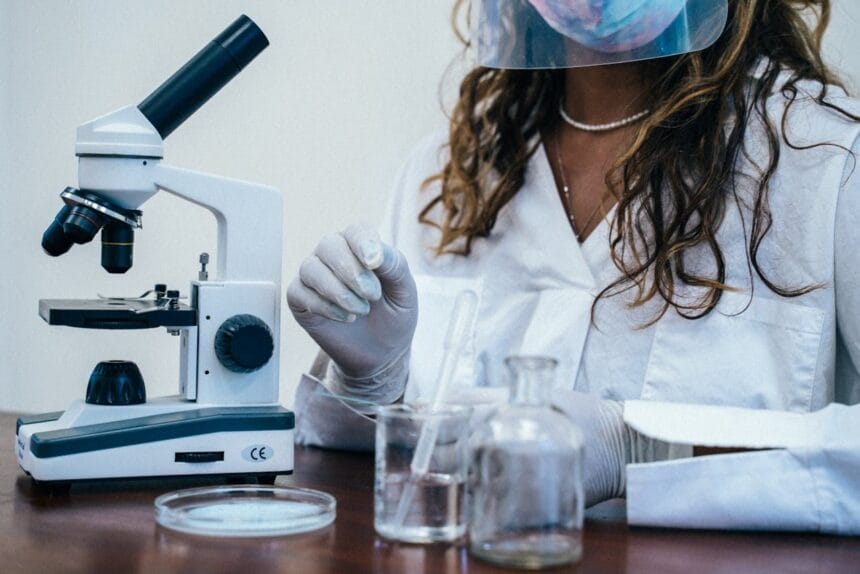The COVID-19 pandemic exposed gaps in the world’s ability to handle infectious disease outbreaks. It also spurred a wave of innovation, inspiring the development of new tools to better prepare for future health crises. Advances in vaccines, pathogen tracking, diagnostic tools, and everyday items like masks and UV sanitizers are paving the way for a stronger response the next time around.
The rapid development of mRNA-based vaccines demonstrated a scalable, adaptable platform capable of responding to emerging threats at unprecedented speeds. Its development earned two researchers a Nobel prize for their “contribution to the unprecedented rate of vaccine development during one of the greatest threats to human health in modern times,” according to the Nobel Assembly in Stockholm.
The success of these vaccines has spurred ongoing efforts to refine the plug-and-play capabilities of mRNA platforms. Scientists are now working on broad-spectrum countermeasures for entire families of viruses. By focusing on common features shared by multiple pathogens, these vaccines could provide immunity against a range of diseases.
Experts agree that these sorts of innovations could fundamentally alter our pandemic response, but they also come with a caveat: preparedness is as much about implementation as invention.
Joe Allen, Associate Professor of Exposure Assessment Science at Harvard University, emphasizes the critical role of indoor spaces in managing disease spread. “The way we design and operate our buildings can limit transmission,” he explains. “I’m optimistic we’ll never forget that lesson — that respiratory pathogens spread primarily indoors, and safer buildings should be part of the frontline defense.”
Strengthening Frontline Defenses
Airborne disease transmission can be combatted with careful design of interior spaces. This could involve more spacious communal areas, facilitating social distancing when necessary. Or it could mean ensuring architectural choices are made in line with local climate realities, allowing ample outdoor air intake, where feasible.
“Bringing fresh, outdoor air inside creates healthier indoor air,” accprding to the American Lung Association. This works by reducing excessive humidity and lowering the levels of infectious pathogens in the air. Outdoor pollution from busy roads certainly needs to be factored into these considerations, however.
One avenue being explored by researchers is the practicality of using ultraviolet light for active decontamination in air filtration systems.
“We find that ultraviolet germicidal irradiation (UVGI) modules added to the HVAC system are very efficient at inactivating pathogens present in aerosols, leading to good indoor air quality even with significant indoor air recirculation,” comment researchers of one study.
They argue that with optimal placement of the air exhaust vents, systems can improve the ventilation efficiency, with significant consequences in terms of energy savings. However, this type of solution is not, as of yet, commercially available.
Another frontline defense could be wearable personal health monitoring tools.
Smartwatches and fitness trackers, for example, are developing powerful health features, such as real-time fever detection, blood oxygen level tracking, and early illness indicators. These devices could soon empower users to monitor their health proactively, potentially catching signs of infection before symptoms escalate.
Researchers in Australia are exploring the potential of these tools combined with artificial intelligence, using health studies to evaluate and collate data. “From this data we hope to be able to develop algorithms to […] see those early signs of an immune response,” explains Professor Siobhan Banks from the University of South Australia.
If people knew that they were sick or they had a high risk of being sick and that they were possibly going to be contagious, Banks adds, this would help them make the right choices about attending social gatherings or going into the office.
Rethinking Risks: Science and Public Safety
Managing public perception is also an important consideration when it comes to pandemic preparedness. During the early months of the COVID-19 pandemic, fears about surface transmission of the virus led to heightened concerns about handling everyday items.
Many people were mistakenly worried that banknotes could act as a significant vector for the virus. As scientists gained a better understanding, it became clear that airborne transmission was the primary driver of infection, while the risk from surfaces was much lower.
Harvard’s Joe Allen highlights the importance of health authorities being transparent about their evolving understanding during outbreaks: “I think we can regain some trust by acknowledging the uncertainty of science — by letting people know what we know and what we don’t know, the reason why we know something or don’t, and the reason why some interventions work.” This approach, he argues, is essential for maintaining public confidence during health crises.
Although surface transmission may be a minimal risk, innovations like Bioguard, a French-made antibacterial, antiviral, and antifungal solution for surfaces, play an important role in bolstering public health measures. Originally invented to protect banknotes during the H1N1 crisis, Bioguard offers protection by reducing the potential for contamination on everyday materials — door handles, screens, and high-touch surfaces in public spaces can all be easily coated.
The solution is highly efficient, too, reducing viral concentration by at least 100 times compared with untreated surfaces, as tests have demonstrated. And it has shown how effortlessly it can be applied at scale, with billions of banknotes in circulation around the world now coated.
“The industry now has Bioguard as a solution. It is inexpensive, highly efficient, long-lasting, harmless for users and the environment,” according to Etienne Couëlle, Managing Director of Oberthur Fiduciaire, the creators of Bioguard.
These kinds of innovations reassure the public and add layers of safety to everyday interactions. But the concern people had with supermarket items and banknotes during COVID-19 underscore a key lesson: balancing scientific clarity with practical innovations can help with managing public fears and enhancing readiness for future outbreaks.
Beyond the psychology component, however, hard scientific breakthroughs have the potential to greatly reduce global vulnerability to pandemics. Prevention of and reaction to outbreaks will require a coordinated response, however: it is important that international efforts are not hindered, or blocked altogether, in today’s more fragmented world order.







